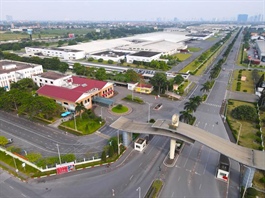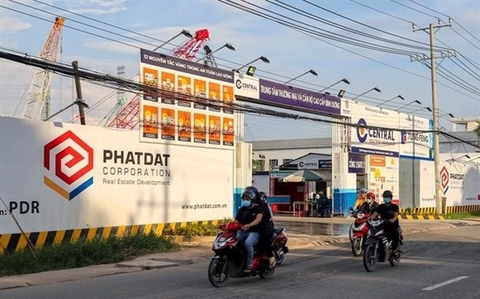Spike in value of real estate inventory for Q4/2022
Spike in value of real estate inventory for Q4/2022
The latest report from the Ministry of Construction (MoC) shows that by the end of Q4 2022, the total value of inventory held by the major property developers showed a 20 per cent jump on-year.

The figures, concerning the housing and property market, covered the total value of inventory held by developers Novaland, Vinhomes, DIC, Dat Xanh Group, Khang Dien, Phat Dat, and Nam Long, which touched $11.7 billion.
Sitting atop the list was Novaland, whose inventory value had risen sharply from $3.77 billion in late 2020 to $5.84 billion by late 2022.
This comes as Novaland increased their exposure to the development of mega resorts, such as Aqua City, NovaWorld Phan Thiet, and NovaWorld Ho Tram on a scale approximating several thousand hectares
As much as 91 per cent of Novaland's inventory value, equal to $5.32 billion, comes from its available land and projects in the development pipeline. The remainder stems from properties that have finalised construction and are waiting to be handed over to purchasers.
Vinhomes were reportedly holding $2.86 billion worth of inventory by Q4 last year, up 131 per cent compared to the previous year. The company’s inventory mostly lies in its for-sale properties that are in the development pipeline, including Vinhomes Grand Park, Vinhomes Smart City, and several Vinhomes Ocean Park developments.
Meanwhile, the valuation of Khang Dien’s inventory rose nearly 60 per cent on-year to $231 million, of which $54 million comes from half-complete developments such as the Khang Phuc project, and $46.8 million comes from the Binh Trung Dong project.
Other developers, like DIC Corporation and Dat Xanh Group, are sitting on portfolios valued at $257.5 million and $619 million, respectively.
The MoC report also indicates that inventory is currently concentrated in high-end condominiums and resort properties. The report commented that last year saw a limited supply of units belonging to new housing projects, as transactions had mainly centred around existing inventories.






















